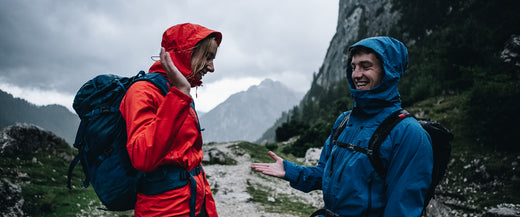
Learn what waterproof gear delivers in practice. Honest advice on breathability, durability and finding the right protection for your activities.
The right waterproof jacket doesn’t just keep rain out – it keeps you comfortable, confident, and ready for whatever the weather throws at you.
Quick Start: Waterproof Jacket Guide
New to waterproofs? Start with Understanding What You Really Need
Matching to activities? Jump to Matching Performance to Your Adventures
Understanding ratings? Go to Decoding the Numbers
Making final choice? Skip to Making Your Decision
When Good Weather Goes Bad
You’re enjoying a perfect day on the hills when those innocent-looking clouds suddenly turn serious. Within minutes, you’re facing driving rain and gusting wind. This is when you discover the difference between having a waterproof jacket and having the right waterproof jacket.
A great waterproof does more than just keep water out – it manages moisture from the inside while protecting you from the elements outside, maintains your mobility, and gives you the confidence to stay out longer.

Understanding What You Really Need
We have titled this a guide to waterproofs because it is the most common of type of outerlayer. However, as is ever the case, there are plenty of outer layers that break this rule but are still absolutely and outerlayer.
Let's stick with waterproofs first, then we will cover off other options including windproofs, natural fibre coats, insulated waterproofs and fleece lined hybrids.
The Fundamental Challenge
Your body produces heat and moisture when you’re active. A simple plastic poncho would keep rain out, but you’d end up soaked from your own sweat and condensation. The magic of modern waterproof jackets is breathability – letting moisture vapour escape while keeping liquid water (rain) out.

What “Waterproof” Actually Means
Waterproof jackets are quite often a brands hero product, and unfortunately have been accompanied by rather ambitious statements like 'guaranteed to keep you dry'. Unless you are a stationary manequin in a lab your experience of being a real person in real environments will mean you know better. Given enough time water always finds a way in.
Clothing has zips, holes for your arms and head, pockets for putting your mints in. Weak points that water exploits. You move, put your arms over your head, look up occasionally to see if the clouds will break as your rucksack forces its weight against you.
For all of its limitations it is convenient to have a name for a category of products designed to keep you as dry. We break it down into 2 main degrees of performance:
Waterproof: Full protection. Rain will not pass through the material. The material is 'waterproof' - scientists have ways to measure this which we will come to soon. All the seams are taped (or welded) to stop water sneaking through the seams. Hoods, cuffs and zips are designed to prevent water entering as much as possible.
Water-resistant, shower-proof and windproof: Light protection, fine for brief showers, seams aren’t usually taped and quite often these garments don't even have a hood. Fortunately they dry quickly and are great for fast and light activities where you are pumping out the calories.

Matching Performance to Your Adventures
Let's dive into the things you do. There are going to be a few keywords here that you will find printed on the labels of waterproofs or used to filter search results. These will help you narrow down your search and will be explained a bit further down.
For prolonged periods of heavy rain, your jacket should have a hydrostatic head of at least 10,000mm (you may see this listed as 10K). Hydrostatic head (HH) is the industry standard for waterproofing. Essentially, the higher the HH rating, the longer your waterproof will keep out the rain.

For Day Hiking and Walking
What you need: Reliable protection without excessive bulk
Key features: Good breathability (10,000+ MVTR), comfortable fit over layers
Sweet spot: 10-20K waterproofing with 2.5-layer construction
Think: Caught in a shower on your local hills
Our Argonaut, Solace and Atalanta jackets both use a 10K waterproof membrane.
For Challenging Mountain Days
What you need: Bombproof protection for serious conditions
Key features: High durability, helmet-compatible hood, reinforced wear points
Sweet spot: 20K+ waterproofing with 3-layer construction
Think: Scottish winter conditions or Alpine weather
Our Gravitas, Balance, Fortitude and Pulsar jackets and Parallax, Equinox and Nautilus trousers all have 20K performance. The Definition mountaineering jacket is our only waterproof jacket with a 30K rating.
For High-Intensity Activities
What you need: Maximum breathability to prevent overheating
Key features: Excellent ventilation, lightweight, packable
Sweet spot: 20-30K breathability, minimal weight
Think: Trail running, fast hill walking, mountain biking
(Gravitas) is exceptionally breathable. At 30k it is the highest performing fabrics for high intensity running and riding on steep terrain.

For Multi-Day Adventures
What you need: Versatile protection that packs small
Key features: Durability for daily use, good pocket access, reliable performance
Sweet spot: 2.5-layer construction, proven reliability
Think: Backpacking trips, bikepacking, travel
Check out our (Balance, Fortitude, Sigma and Argonaut jackets, Parallax and Nautilus trousers)
Decoding the Numbers
When you browse through rails and rails of waterproof jackets how do you know which one is suitable for you? There are two performance ratings that have become pretty ubiquitous indicating how waterproof the garment is and how breathable it is.
Waterproof Ratings (Hydrostatic Head)
- 10,000mm: Very good – handles prolonged heavy rain
- 20,000mm: Excellent – reliable in harsh conditions with heavy packs
- 30,000mm: Exceptional – for the worst mountain weather
Higher numbers mean longer-lasting protection under pressure
Find out more about Hydrostatic Head.
Breathability Ratings (MVTR)
- 10,000 g/m²/24hrs: Good – fine for moderate activity
- 20,000 g/m²/24hrs: Excellent – handles strenuous activity well
- 30,000 g/m²/24hrs: Exceptional – maximum moisture transfer
Higher numbers mean better moisture management when you’re working hard
Find out more about MVTR.
Construction Types Explained
While a waterproof jacket is part of your overall layering system, a waterproof jacket is itself made up of multiple layers! This sandwich construction incorporates a resistant outerlayer, a waterproof and breathable middle layer (membrane) and a protective inner layer. This might feel a little confusing so let's explain how this is presented on the shop floor.
2.5-Layer: Light and Packable
Best for: Day trips, backup protection, activities where weight matters
Pros: Lightweight, affordable, packs small
Cons: Less durable than 3-layer options
3-Layer: Tough and Reliable
Best for: Regular use, harsh conditions, when durability matters
Pros: More robust construction, longer-lasting
Cons: Slightly heavier, usually more expensive
Find out more about how waterproof jackets are made.
Essential Features to Consider
We have looked at the performance and characteristics of the materials used to make a waterproof jacket, now we are going to look at how these are put together into a garment that fits your body and moves as you do.

The Hood
A good hood should:
- Adjust snugly around your face
- Have a stiffened peak for wind protection
- Turn with your head (not fight against it)
- Fit over a helmet if needed for your activities
Pockets and Access
Consider:
- Can you reach pockets while wearing a backpack?
- Are they big enough for your essentials?
- Do zips have storm flaps for extra weather protection?
Ventilation
Look for:
- Underarm zips for instant cooling
- Two-way main zips for bottom ventilation
- Mesh-backed vents that don’t let rain in
Fit and Comfort
Regular Fit: Room for thick insulation layers underneath
Slim Fit: Designed for base layers and thin midlayers only
Active Fit: Cut for movement, often with stretch panels
Special Considerations
With the basics covered let's take a look at a few other important factors you should have in mind when buying your waterproof.
DWR Treatment (Durable Water Repellent)
This is a coating that makes water bead up and roll off your jacket. A bit like water on a ducks back! While the DWR does not effect how waterproof your coat is (that's the job of the membrane), it does have an important part to play in its breathability. By preventing water, dirt, and other contaminants from being absorbed into the surface layer, water moisture can continue to pass through.
Find out more about DWR and how we have transitioned to PFC-free DWR treatments for environmental responsibility.
Sustainability Matters
Look for:
- Recycled fabrics where possible
- PFC-free treatments
- Responsible manufacturing
- Brands committed to repair and longevity
Alpkit products are designed with repairability in mind. Each of our stores has a repair station where they can patch holes and repair zips. We also offer wash and reproofing services to keep your waterproof in tip top condition.
Other options
The world of outerlayers is a vibrant and confusing place. What else is there beyond the vulnerable waterproof.. and why!?
Let's break in easily with an option that fell out of favour for a while, but is now very much back in vogue.

The insulated waterproof
An insulated waterproof jacket combines the features of both insulation and waterproofing, making it an incredibly versatile piece of outdoor gear with some key benefits:
- Protection from rain: A waterproof outer layer ensures that rain, sleet, or snow doesn't penetrate the jacket, keeping you dry.
- Warmth: Insulated jackets contain materials, either synthetic or natural (like down), that trap air and retain body heat. This makes them ideal for cold conditions.
- Improved Comfort: Staying both dry and warm enhances comfort, which can lead to a more enjoyable outdoor experience, whether you're hiking, skiing, or simply commuting in cold, wet weather.
Students of this series will now be crying out 'but doesn't this break the whole layering system?' Everything I have learned has been a lie!?'
Bit dramatic, but yes by joining the insulation to the outerlayer and producing a single garment we have indeed reduced its versatility. It is bulkier to carry and you cannot just whip off a layer if you get too hot. However for some people the benefits will be worth the trade offs.
One jacket to rule them all, Solace Mens and Solace Womens is an insulated waterproof made from damp-proof synthetic insulation that keeps you warm when cold and dry when wet. The Solace can be used as a walking jacket, a ski jacket, or for instant warmth after a winter swim or ride. It’s got hand warmer pockets and glove-friendly cuffs to accommodate ever-cooling extremities. Made with 100% recycled lining, 70% recycled insulation and a PFC-free DWR so it won’t leak nasties into the environment. A winter one-stop-shop layer. For many people and activities, there are compelling benefits for combining insulation and waterproofing into a single jacket.

The get wet and stay warm crowd
If the concept of the insulated waterproof didn't push you over the edge this just might. It takes a certain degree of belief to switch your thinking from I must stay dry under any circumstances to I know I am going to get wet so I am going to lean into it.
Fleece piled jackets are for the free thinkers and true believers, the skin swimmers of the outdoors. Take a durable windproof outer layer, apply a DWR, why not, and attach it to a fleecy pile lining. The theory - and there are many advocates for this amongst hillwalkers, climbers and MRT teams, is that even though the outer will wet out the fibre pile will still keep you warm (as long as you are active). Thanks to the capillary action across the fibres you will constantly be pushing moisture out and away from your body. Fibre pile is naturally hydrophobic so dries quickly. As it is not waterproof it is very breathable, lasts forever, is easily repaired.
It is quite a warm garment, so more suited to winter use and many practitioners wear it directly against the skin, so really we could have included this in baselyer, midlayer and insulation - such is the problem of defining such a versatile piece of kit. Tempted to give it a go?
Softshell
This is basically fleece designed to be the outerlayer. It can have a membrane, but the best soft shells have a dense weave that block wind and rain. Soft shell (or hardshell fleece if you prefer) works well in cold, dry environments. The advantages are a soft, no rustling feel to the fabric, high durability, breathability and long lifespan.
Ventile® , the natural fibre alternative
Ventile® is a cotton fabric that has been used in the outdoors for years. Flick through your history books and you will see it cropping up anywhere from Llywedd to the South Pole to the top of Everest. What a show off.
It has seen a resurgence of late as people have rediscovered the many superb qualities that justify finding its place in the category of outerlayer. It is weatherproof, breathable, extremely hard-wearing and treated with a PFC-free DWR. It combines traditional technology with modern design.
The windproof
Lets end our journey through outershells with a layer everyone can understand. Lighter than a full waterproof, usually coated with a DWR to help shed a light shower and really, really packable. Windproofs are for days when it is breezy but dry. Whether you are out for a jog, riding your bike or trying to beat the windchill a windproof is an excellent addition to your outdoor wardrobe.

Making Your Decision
We have covered a lot here, so let's recap with the main takeaways that will help you when choosing a waterproof.
Quick Decision Tree
- What’s your primary activity? (Determines breathability needs)
- What conditions do you expect? (Determines waterproof rating)
- How often will you use it? (Influences durability requirements)
- What’s your budget? (Helps narrow construction type)
Common Mistakes to Avoid
Going too heavy: You don’t always need the most bombproof option
Ignoring breathability: Staying dry means managing inside moisture too
Wrong size: Too tight restricts layering; too loose catches wind
Skipping care: Even the best jacket needs proper maintenance
Our Recommended Approach
For Most People: Versatile All-Rounders
A quality 2.5 or 3-layer jacket with 20K/20K performance handles the vast majority of conditions you’ll encounter. Features like good ventilation and a reliable hood matter more than maximum ratings.
Key Examples from Our Range:
- Sigma: Recycled and recyclable with PFC free DWR, our most sustainable jacket
- Balance: Stretchy 3-layer for active use
- Fortitude: Hillwalking-specific with longer cut and practical features
- Gravitas: Ultralight 3-layer for when weight matters
For Specific Needs: Specialist Options
- Definition: 30K performance for serious mountaineering
- Pulsar: Lightweight 2.5-layer for fast and light adventures
Beyond the Purchase
Getting the Most from Your Jacket
- Layer properly: Your waterproof is the outer shell of a system
- Maintain the DWR: Refresh water repellency when it starts to ‘wet out’
- Store properly: Hang it up, don’t stuff it wet
- Repair damage: Small tears can be fixed before they become big problems
When to Upgrade
Your jacket needs replacing when:
- Waterproofing fails despite proper care
- Zips consistently stick or break
- Fabric shows significant wear
- It no longer fits your needs or activities
When this happens you may wish to retire your jacket. It is not currently possible to easily recycle most waterproof jacket, but take a look at our Continuum Project to see how we are giving you ways to give your jacket a new lease of life and keep it out of landfill.
The Bottom Line
The best waterproof jacket is one that suits your specific needs and activities. A £100 jacket that fits your requirements perfectly is better than a £500 jacket with features you’ll never use.
Focus on getting the basics right – reliable waterproofing, adequate breathability, and a comfortable fit. Everything else is optimisation.
Next up in our series The Complete Guide to Outdoor Clothing: We take a look at what you wear on your legs, it's not at all pants.
- The Complete Guide to Outdoor Clothing: Layering Systems That Work
- Base Layer Guide: Merino Wool vs Synthetic Materials
- Mid Layers Guide: Fleece and Natural Fibres
- Insulated Jackets: Down vs Synthetic Complete Guide
- Waterproof Jackets: Your Complete Guide to Staying Dry
- Outdoor Trousers, Shorts and Leggings: Your Complete Guide
- Hiking Socks Guide: Materials, Cushioning, and Fit
- Keeping Your Hands Warm: The Complete Guide to Outdoor Gloves






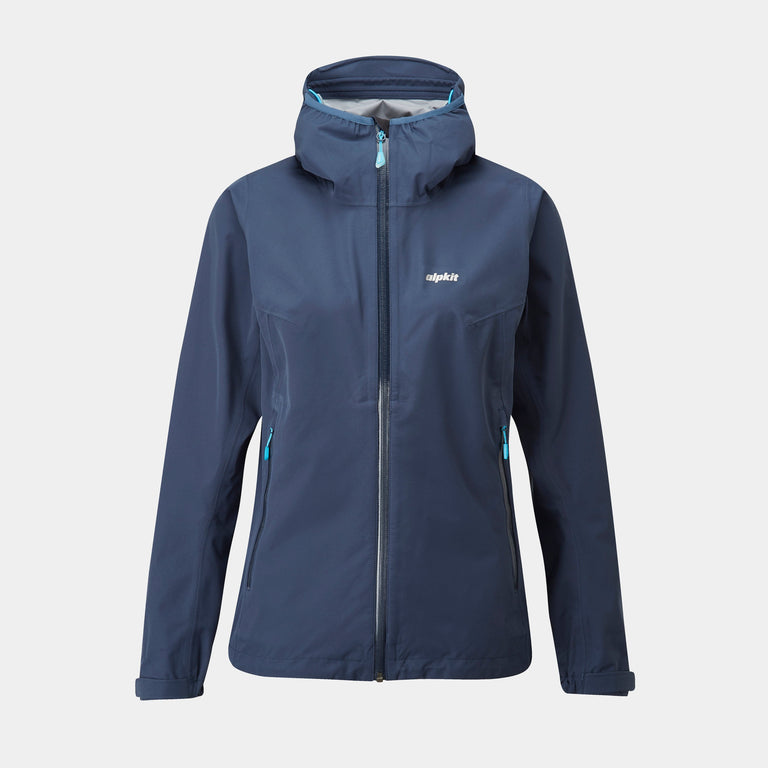
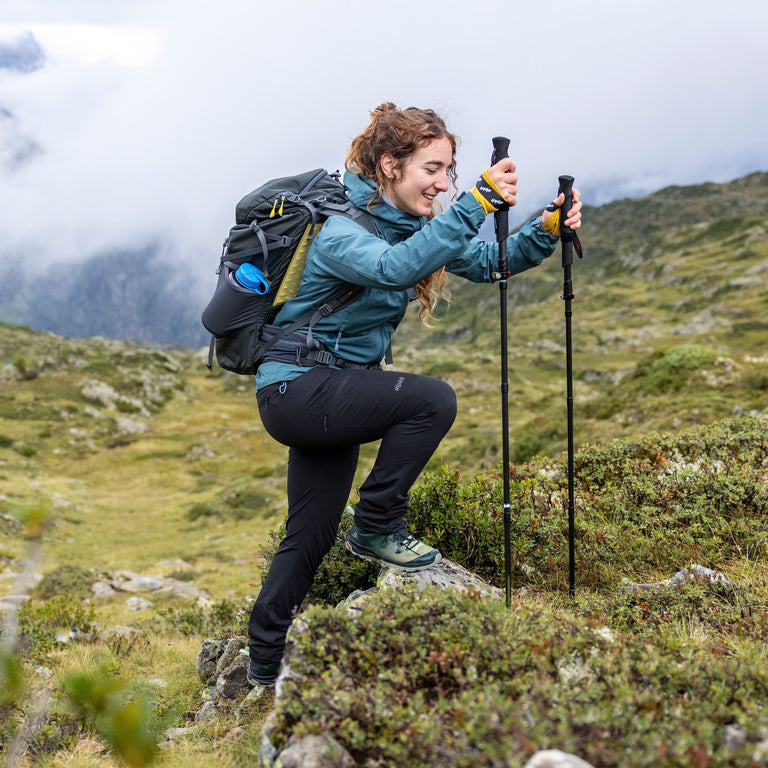
![Gravitas [Mens]](http://us.alpkit.com/cdn/shop/files/mens-gravitas-2025-chilli.jpg?v=1765566103&width=768)
![Gravitas [Mens]](http://us.alpkit.com/cdn/shop/files/gravitas-location-1-RETOUCH.jpg?v=1765566103&width=768)
![Gravitas [Womens]](http://us.alpkit.com/cdn/shop/files/womens-gravitas-reef_2d13b155-8b33-426c-b830-bc1af1ad56df.jpg?v=1764270047&width=768)

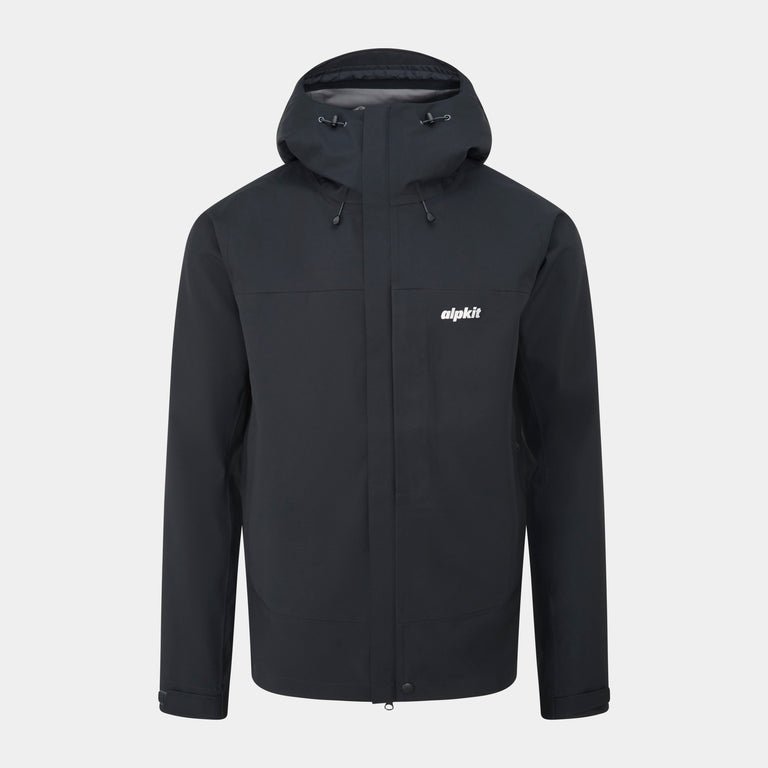
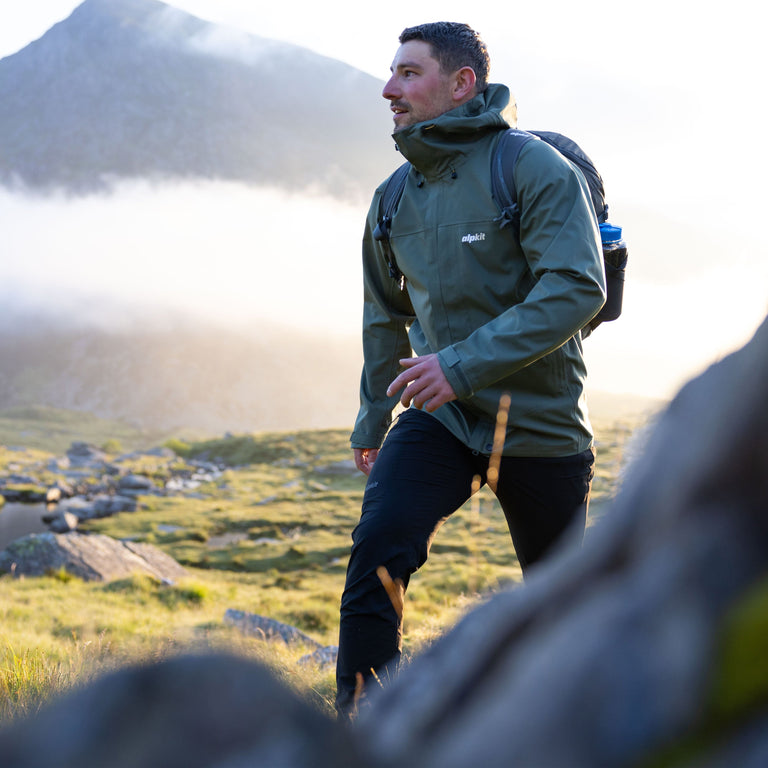
![Fortitude [Womens]](http://us.alpkit.com/cdn/shop/files/fortitude-womens-2025-alder.jpg?v=1764270023&width=768)

![Balance [Mens]](http://us.alpkit.com/cdn/shop/files/balance-mens-2025-reef.jpg?v=1765566129&width=768)
![Balance [Mens]](http://us.alpkit.com/cdn/shop/files/Balance-mens-2.jpg?v=1765566129&width=768)
![Balance [Womens]](http://us.alpkit.com/cdn/shop/files/balance-womens-2025-black.jpg?v=1765566193&width=768)
![Balance [Womens]](http://us.alpkit.com/cdn/shop/files/Balance-womens-3.jpg?v=1765566193&width=768)

![Definition [Mens]](http://us.alpkit.com/cdn/shop/files/Definition-men-2.jpg?v=1764356982&width=768)

![Definition [Womens]](http://us.alpkit.com/cdn/shop/files/Definition-women-3.jpg?v=1764357034&width=768)